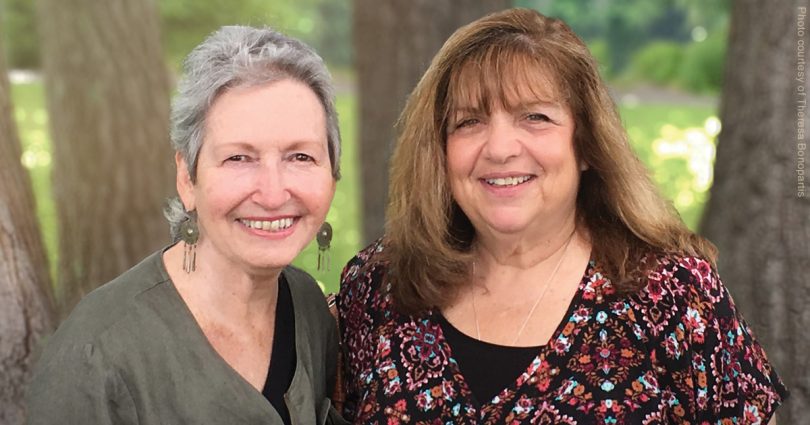By Camille Giglio
California, a state with an aging population, falling birth rates, and rising welfare rolls, now has a super majority of Democrats in the state legislature with a Democrat as governor. The legislature has the best opportunity it has ever had to pass whatever legislation it wants. And, what it has wanted since at least 2000 is assisted suicide.
They came close to getting it in 2008 when Governor Schwarzenegger signed four bills: AB 3000 (WOLK, D) Physician Orders for Life-Sustaining Treatment-POLST; AB2747 (Berg-D) End-of-Life Care; AB2565 (Eng-D) Brain Death; and SB 1196 (Runner-R) Coroner Inquiries.
The Wolk bill, Physician Orders for Life-Sustaining Treatment, provided The Compassion and Care folks, inspired by Derek Humphrey and his Death with Dignity organization, with permission to establish themselves in California and begin to promote their Physician Orders for Life-Sustaining Treatment to California’s citizens. It wasn’t official state authorization, but pretty close. It has exposed California’s senior citizens to some high-pitched sales promotions promising compassion and care and a peaceful, painless “natural” death at the time and place of the patient’s choosing.
“We accept natural childbirth,” said one representative, “why not natural death?”
Pro-lifers might, now, want to rethink their statement about supporting life from conception to natural death. The words “choice” and “conception” have been co-opted by the abortionists. Now the phrase natural death is being co-opted by the death and dying crowd.
During 2012 my local newspaper, the Contra Costa Times, carried a four-part series entitled “The Cost of Dying.” It was written by Lisa Krieger, a reporter for the Times’ parent organization, the Bay Area News Group. As the articles proceeded, it became very obvious that this was little more than the use of a newspaper to promote acceptance of the POLST form.
On January 14, 2013, I attended a two-hour presentation on the POLST form held at the Times publishing headquarters and led by the reporter herself.
As a part of her introductory statement, she defined the POLST form as assisting and ensuring that people were allowed to choose to have a “natural” death, uncomplicated by traumatic and often futile resuscitation attempts required by law for EMT personnel or ICU nurses and doctors. Krieger said that these ICU aggressive treatments were often very stressful on the survivors and that only in 15 percent of CPR attempts was a person ever restored to their former health. She also stated that this form was similar to or the same as the form used in Oregon.
A POLST form, Krieger said, was the “best gift one could give their family.” But she felt that people should prepare their families for acceptance of this decision and suggested that Thanksgiving dinner was a good time, with all the family gathered to start the conversation.
Apparently there are programs developed by such groups as The Conversation Project using starter kits to guide family discussions. Also there is the Project Grace campaign to get people talking about advance care decision-making and preferences.
She made a brief mention of the “horrible situations” with the Karen Quinlan and Teri Schiavo cases suggesting that no one wanted their family to have to go through that stressful experience. A pre-need signing of a POLST form would have solved all that distress. She seemed surprised when it became obvious that no one in the audience knew who Karen Quinlan and Teri Schiavo were.
In passing, she mentioned the removal of nutrition and hydration, which the form allows the patient to choose, as a minor issue. She declared that the removal of food was not missed by the patient. I thought it was quite ironic that, as she was saying this, her boss brought her a glass of water.
When asked if she had a DNR or a POLST form, she said no. She was 57 and healthy and she didn’t need those things. In fact, she said, if she walked out the door and had a heart attack in the parking lot she wanted to be resuscitated.
When a member of the audience commented that this sounded more like a return to the old days when advanced life-saving methods were non-existent and people died without the benefits of today’s aggressive care, she just shrugged her shoulders and said that everybody had the right to choose.
She mentioned that about 14 states now have made the POLST form available. It may also be known by other names and acronyms in other states.
The POLST form is approved by HIPAA—the Health Insurance Portability and Privacy Act—under the Office of Civil Rights, a branch of the U.S. Department of Health and Human Services.
It can be revoked by the patient, but otherwise has no expiration date and has the force of law. The purpose of a POLST form, according to the Compassionate Care folks, is to allow a patient to assign a power of attorney for healthcare decisions to someone of their choice, taking effect when it is determined that the patient can no longer make decisions for his own healthcare treatments. It is signed by the patient and witnessed by whomever is available at the time. It can be signed by a nurse on a patient’s behalf. It can also double as an organ donation authorization. It is intended that this form follow the patient and be inserted in both paper and electronic medical records. The form is printed on hot pink paper to be quickly recognized by any attending physician. She praised the Gunderson Lutheran Hospital in a town in Wisconsin that went on an aggressive POLST sign-up campaign resulting in almost all of the town’s citizens signing the form.
This, combined with the development of electronic registering of the form with all governmental agencies, she said, allows the EMT people to know exactly what they may do should they be called to someone’s home for an emergency.
She did acknowledge that if a person had a POLST form rejecting emergency measures to resuscitate them, there was little use in calling an ambulance except that the EMT people could then alert the coroner’s office and take the body away.
California, she said, does not yet have the capability for electronic registering of the form, but feels that it is in the planning stages.
Most likely electronic registering of end-of-life forms of any kind will require legislation. California has, in the last couple of years, submitted several bills authorizing the collection of data for electronic transmittal and distribution of data and medical records amongst government agencies. After attending this presentation, I am now much more aware of the importance of such bills.
California residents should be on alert for approaches by persistent and aggressive POLST salesmen and hospital discharge personnel, including Kaiser Permanente facilities, Catholic hospitals, and hospice personnel, urging people to sign POLST forms—especially if the patient is being released from a hospital to a continuing care facility or to his home.
The presentation by Ms. Krieger was very one-sided, making it appear that a POLST form was the patient’s only choice and that, without it, a patient might well die in an extremely painful and anxiety ridden condition, not to mention the distressful situation experienced by the family.
There are life-affirming medical directives available from pro-life organizations that authorize designated persons to act on behalf of the patient and working with the doctor at the time of need, to provide the best medical care for the specific situation.
Camille Giglio is the director of the California Right to Life Committee, Inc., and is a legislative analyst focusing on public policy issues affecting life and family.



